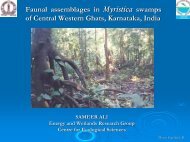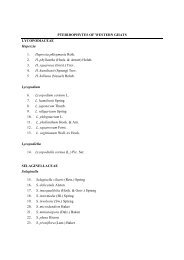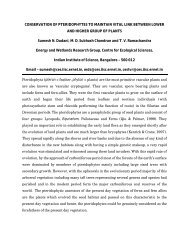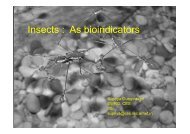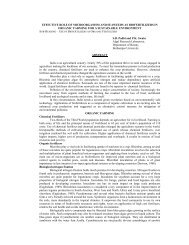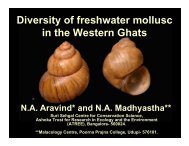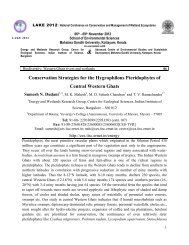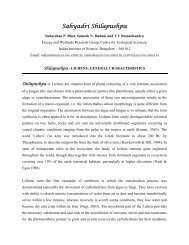The diatom genus Gomphonema Ehrenberg in India: Checklist and ...
The diatom genus Gomphonema Ehrenberg in India: Checklist and ...
The diatom genus Gomphonema Ehrenberg in India: Checklist and ...
Create successful ePaper yourself
Turn your PDF publications into a flip-book with our unique Google optimized e-Paper software.
Figs 37–40. SEM. Interior <strong>and</strong> girdle view of <strong>Gomphonema</strong> difformum. Fig. 37. Interior view of the<br />
whole valve show<strong>in</strong>g pseudosepta at both ends <strong>and</strong> large helictoglossae. Fig. 38. Interior view show<strong>in</strong>g<br />
the central nodule with broadly recurved proximal raphe ends, rounded stigmal open<strong>in</strong>g <strong>and</strong> marg<strong>in</strong>al<br />
lam<strong>in</strong>a. Fig. 39. Girdle view show<strong>in</strong>g r<strong>and</strong>omly distributed porelli on the mantle Fig. 40. Girdle view<br />
show<strong>in</strong>g the open type b<strong>and</strong>s with septa. Scale bar represents 2 µm (Fig. 37); 1 µm (Figs 38, 39, 40).<br />
stigmal open<strong>in</strong>g (Fig. 34). <strong>The</strong> apical pore field is composed of round porelli that<br />
are both physically separated <strong>and</strong> morphological dist<strong>in</strong>ct from the areolae (Figs 34,<br />
36). <strong>The</strong> headpole looks blunt, where the <strong>in</strong>terface between the valve face <strong>and</strong> mantle<br />
is abrupt (Figs 34, 35). <strong>The</strong> raphe bends onto the mantle, <strong>and</strong> bisects a group of<br />
porelli-like pores that are both physically separate <strong>and</strong> morphologically differentiated<br />
from the areolae (Figs 34, 36). Porelli extend from the valve face onto the mantle<br />
(Figs 34, 36, 40). Internally, the proximal raphe ends are broadly recurved on a<br />
central nodule that appears composed of two <strong>in</strong>ternally-elevated sections. Between<br />
the sections is situated a rounded stigmal open<strong>in</strong>g (Figs 37, 38). Along the mantle on<br />
each side is a marg<strong>in</strong>al lam<strong>in</strong>a (Fig. 38). Helictoglossae are relatively large, <strong>and</strong> the<br />
226



